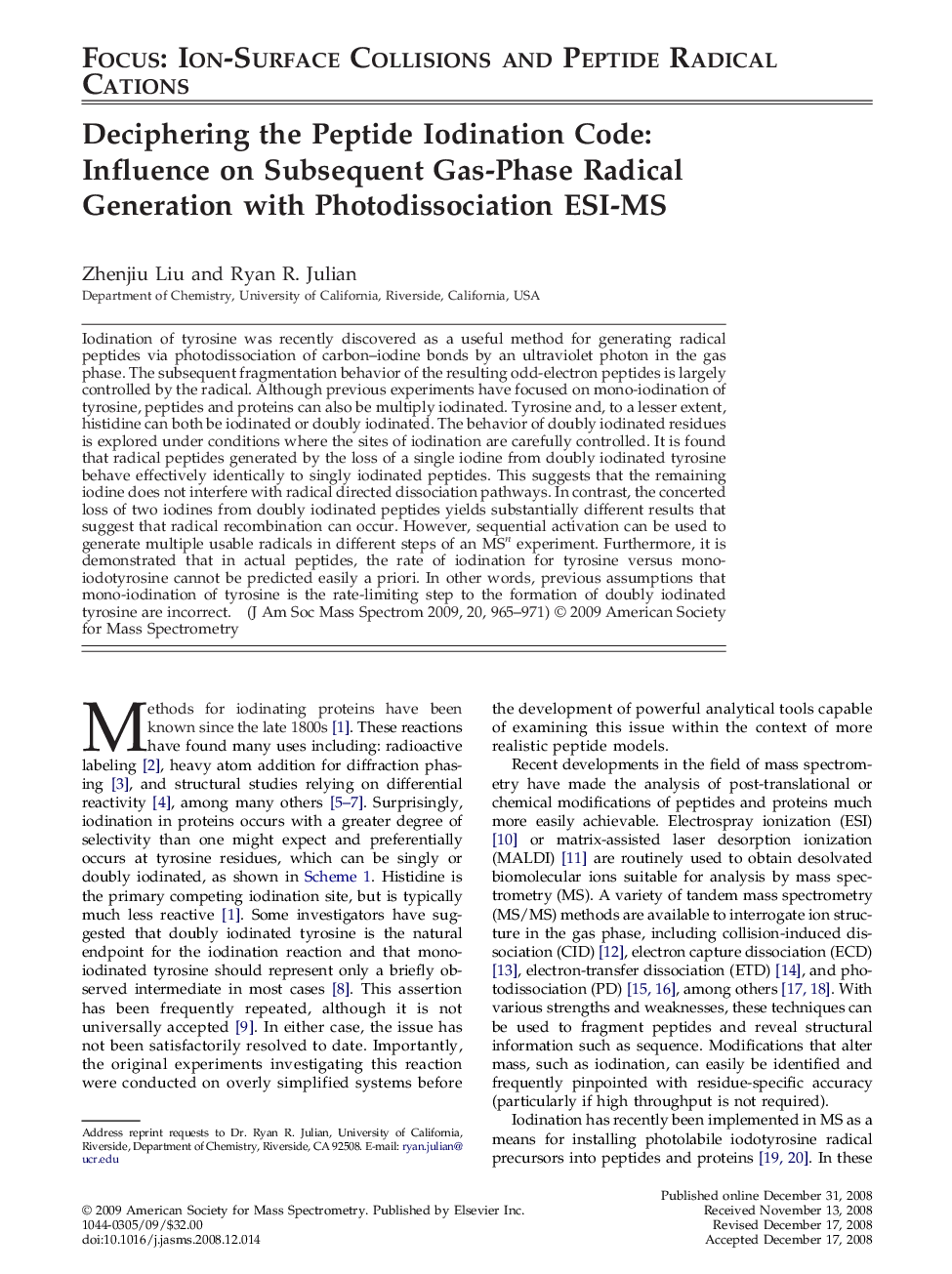| کد مقاله | کد نشریه | سال انتشار | مقاله انگلیسی | نسخه تمام متن |
|---|---|---|---|---|
| 1195269 | 964307 | 2009 | 7 صفحه PDF | دانلود رایگان |

Iodination of tyrosine was recently discovered as a useful method for generating radical peptides via photodissociation of carbon–iodine bonds by an ultraviolet photon in the gas phase. The subsequent fragmentation behavior of the resulting odd-electron peptides is largely controlled by the radical. Although previous experiments have focused on mono-iodination of tyrosine, peptides and proteins can also be multiply iodinated. Tyrosine and, to a lesser extent, histidine can both be iodinated or doubly iodinated. The behavior of doubly iodinated residues is explored under conditions where the sites of iodination are carefully controlled. It is found that radical peptides generated by the loss of a single iodine from doubly iodinated tyrosine behave effectively identically to singly iodinated peptides. This suggests that the remaining iodine does not interfere with radical directed dissociation pathways. In contrast, the concerted loss of two iodines from doubly iodinated peptides yields substantially different results that suggest that radical recombination can occur. However, sequential activation can be used to generate multiple usable radicals in different steps of an MSn experiment. Furthermore, it is demonstrated that in actual peptides, the rate of iodination for tyrosine versus mono-iodotyrosine cannot be predicted easily a priori. In other words, previous assumptions that mono-iodination of tyrosine is the rate-limiting step to the formation of doubly iodinated tyrosine are incorrect.
Graphical AbstractThe iodination of peptides is examined in detail to determine preferred target residues, the degree of selectivity, and suitability of target residues as radical precursors.Figure optionsDownload high-quality image (102 K)Download as PowerPoint slide
Journal: Journal of the American Society for Mass Spectrometry - Volume 20, Issue 6, June 2009, Pages 965–971